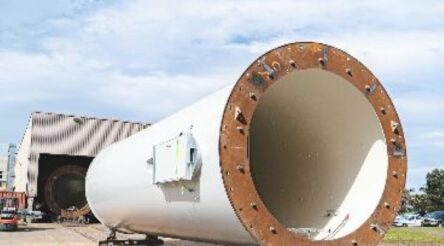Innovation critical for defence – by Gregor Ferguson

By Gregor Ferguson
Why is innovation important to a defence force? Because a small country deploying a small defence force won’t derive either an operational advantage or an economic advantage from trying to do the same thing as everybody else, only cheaper. Innovation – in equipment, organisation and process – is the difference between being ordinary and vulnerable, on the one hand, and strong, resilient and prosperous on the other.
Defence must be the leader in innovation – as well as being innovative in what it does and how it does it, Defence must also create an environment in which its external partners and suppliers can innovate successfully, too.
Why? Because Defence is a monopsony market. That means the defence customer has a disproportionate shaping effect on the market: its size, its behaviour and the barriers to entry. If he is the launch (and possibly sole) customer for a new piece of equipment, or service, then its success depends to a significant degree on how Defence addresses both the operational need and the opportunity to be innovative in meeting it. Operational success also depends on the partners and suppliers Defence chooses to deliver this new capability – and making a wise choice is a pre-condition (one of many) for innovation success.
So, what are the pre-conditions for Defence’s innovation success and the establishment of an innovation-friendly broader defence business environment? There are a dozen, in my view, and regardless of whether the innovation in question is a new piece of equipment or some sort of Enterprise Innovation that changes Defence’s nature or behaviour, they shape key attributes and behaviours on the part of Defence and the ADF. Boiled down to their essentials, and in no particular order, this is what I think they are:
1. Nurture and grow your technical expertise
2. Nurture and grow your professional expertise
3. Maintain your situational awareness: keep abreast of emerging threats as well as emerging technologies and their potential effects on your own capabilities and operations
4. Understand your capability needs and articulate them properly
5. Be methodical in conducting R&D and capability development: this will help you understand your needs, as well as helping you identify solutions and assess the contributions of others
6. Seek opportunities for Enterprise Innovation – for innovation in your organisational practices, processes and procedures as well as in your equipment inventory (innovation in the latter is usually wasted without innovation in the former as well)
7. Take every opportunity to engage with and inform your industry and research base – the more they know about what you do, how you do it and what difficulties you face, the better able they are to support you and help you solve them – see Israel as an example
8. If it needs to be done at all, do it quickly. Urgency eliminates irrelevancy: a short deadline ensures a focus on the outcome, not the process
9. Establish a disciplined acquisition strategy that both reflects the urgency of the need and tolerates sensible risks (see 1 and 2 above) and remember that obsessive risk-aversion is itself another source of risk
10. Appoint a champion with sufficient seniority to drive the project forward in spite of bureaucratic obstacles – or to kill it, if this turns out to be the correct course of action; and give him or her the best possible project team
11. Make sure you’re nurturing your industry and research base – In a technology driven monopsony a smart customer doesn’t allow his industry and research sectors to fall into a technical rut or to fall behind in a technology sense.
12. Nurture a culture and capacity to work with your industry base to identify opportunities and develop solutions, both for yourself and also, potentially, for allies and export customers.
Defence – the ADF, CASG and DST – is mobilising itself to satisfy these pre-conditions. In this regard, the 2020 Force Structure Plan (FSP) has maintained the policy and cultural change trajectory set by the 2016 Defence White Paper and Defence Industry Policy Statement. However, if you drill down into each of these pre-conditions you’ll find decades of cultural baggage that needs to be sorted, as well as some very sensible precautionary policies and procedures you’d be stupid to throw away. The process of sorting the baggage and discarding what’s irrelevant and counter-productive won’t happen quickly.
To continue satisfying the pre-conditions for innovation and operational advantage in both Industry and Defence we need to see the emerging cultural changes embedded permanently in the ADF and in Defence’s capability development and acquisition processes. The early signs are very promising – but Defence and Industry together need to make these changes future-proof.
Defence still needs to overcome some cultural hangovers which have actively stifled opportunities in the past for innovation by Industry and the research sector as well as the ADF. Australia needs closer Alignment between Defence, DST, the national research sector and Industry: closer engagement and better communications; the ability to concentrate both Defence and non-Defence resources on defining problems accurately and then solving them efficiently; a better understanding of the resources needed and those actually available; and the trust between supply chain partners which is the product of proper alignment.
Project ⍺+ has been working in this area for years. We know how innovation works (and occasionally doesn’t) and how important alignment, communications and networking are, and how to make them work for you. So get in touch.
Gregor Ferguson is director of Project Alpha Plus, a defence and innovation analyst, consultant and communicator who has worked in the defence media and industry for more than 30 years. His Ph.D is in defence industry innovation.
Picture: Gregor Ferguson
Subscribe to our free @AuManufacturing newsletter here.
Topics Analysis and Commentary Defence
@aumanufacturing Sections
Analysis and Commentary Awards Defence Manufacturing News Podcast Technology Videos










